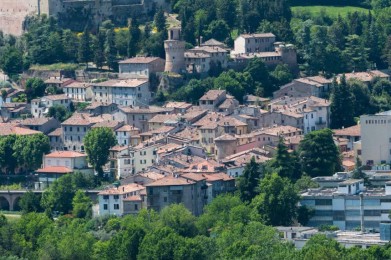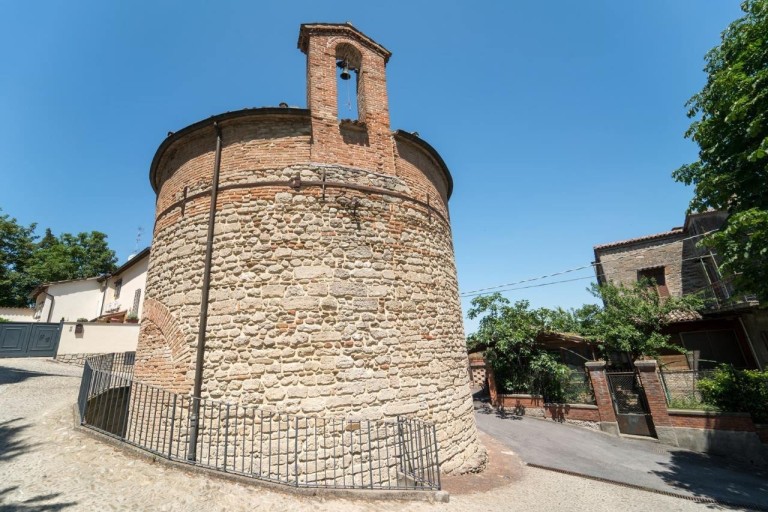In the heart of the Murata, the picturesque medieval citadel overlooking the historic center of Castrocaro Terme, lies an authentic architectural and spiritual jewel: the Baptistery of San Giovanni alla Murata, known in ancient times as the Church of San Giovanni della Torre. First mentioned in documents in 1292, the building stands in the highest part of the village, along the path leading to the Rocca, and preserves intact its centuries-old charm.
A rare and precious building
The Baptistery, circular in plan, is built of brick and ashlar and is topped by a small bell gable. It is a very rare example of religious architecture: in fact, it is one of only 52 baptisteries that survived in Italy after the reforms of the Council of Trent, out of more than eight thousand that existed. In all of Romagna, similar buildings are found only in Castrocaro and Ravenna.
The Byzantine basin-sarcophagus
The interior holds its most significant treasure: a baptismal font carved from a Byzantine sarcophagus made of Istrian marble, dating from the 7th-8th centuries AD. The basin, carved in bas-relief, is of clear Ravenna influence and was used for baptismal immersion, an ancient form of sacrament now rarely preserved. The presence of this element makes the Baptistery a unique site in the region.
Sacred art and restoration
On the altar wall are traces of a fresco, probably from the 15th century, depicting St. John the Baptist baptizing Christ. Next to it, a 17th-century altarpiece with a coeval frame, dated 1643, depicts the Baptism of Jesus. In addition, a large 17th-century fresco depicts St. John the Baptist with remarkable expressiveness.
The Baptistery underwent conservation work in 1938 and recent restoration, which preserved its structure and enhanced its artistic and liturgical elements.
A place of devotion and tradition
Owned by the Church of Castrocaro Terme and Terra del Sole, the Baptistery is now open to the public on special occasions, including the feast of Our Lady of the Flowers (the Sunday after Easter) and the solemnity of St. John the Baptist, June 24, to whom the building is dedicated. During these celebrations, the place comes back to life as a center of worship and spirituality, in keeping with its long tradition.
Inserted in the Renaissance Citadel enclosed between Porta San Giovanni and the Postierla, the Baptistery is just a few steps away from the 16th-century Bell Tower, famous for housing the largest bell in Emilia-Romagna (as much as 13 quintals), which is still tolled by the Compagnia dei Campanari during the main festivities.
The Baptistery of San Giovanni alla Murata is much more than just a religious building: it is living testimony to Castrocaro’s thousand-year history, a rare example of Byzantine sacred architecture that has survived time, a place of worship, art and collective memory. Its visit gives an intimate and profound experience, set among the ancient stones of the medieval citadel.


